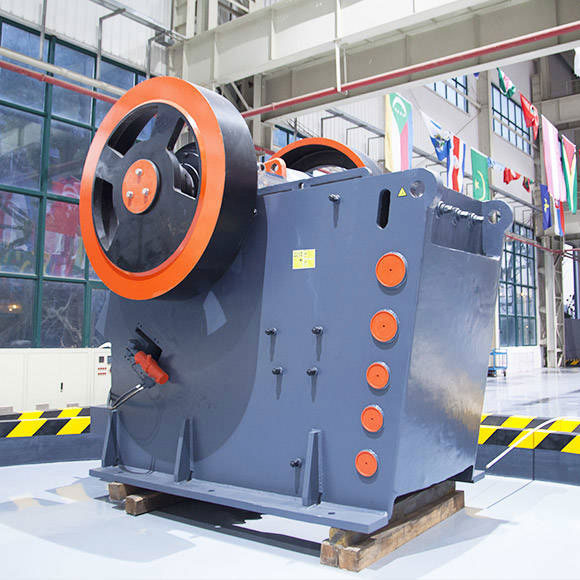A jaw crusher is a primary crushing machine used in various industries, including mining, construction, and recycling. It’s a versatile crusher capable of handling a wide range of materials, including hard and abrasive ones like metal ores. In this article, we’ll delve into the workings of a jaw crusher specifically designed for crushing metal ores.
Introduction to Jaw Crushers:
Jaw crushers are one of the most commonly used primary crushers in mining and quarrying operations. They consist of a fixed jaw and a moving jaw, with the moving jaw pivoted at the top. The material to be crushed is fed into the jaw cavity from the top, and the crushing action is achieved by the movement of the two jaws – one fixed and the other moving back and forth.

Design and Components:
- Fixed Jaw: The fixed jaw is an integral part of the crusher frame and remains stationary. It provides structural support and houses the crushing surface.
- Movable Jaw: The movable jaw is attached to the eccentric shaft and can be moved back and forth to crush the material. It is responsible for exerting the crushing force on the material.
- Eccentric Shaft: The eccentric shaft is a crucial component that drives the movable jaw in a reciprocating motion. It is powered by a motor, which rotates it, causing the movable jaw to move.
- Toggle Plate: The toggle plate is a safety mechanism that connects the movable jaw to the rest of the crusher. It protects the crusher from damage in case of an overload by releasing the tension on the movable jaw.
- Bearings: Bearings support the eccentric shaft and ensure smooth operation of the jaw crusher.
Operation:
The operation of a jaw crusher for metal ore involves several steps:
- Feeding: Ore is fed into the crusher chamber from the top opening. The size of the feed material should be smaller than the crusher’s inlet size to ensure efficient operation.
- Crushing: As the movable jaw moves back and forth, it crushes the ore against the fixed jaw. The crushed material is discharged through the bottom opening, known as the discharge opening.
- Adjustment: The discharge opening size can be adjusted by changing the position of the toggle plate or using hydraulic systems in modern crushers. This allows for control over the size of the crushed material.
- Maintenance: Regular maintenance is essential to ensure the smooth operation of the crusher. This includes lubrication of bearings, inspection of wear parts, and replacement of worn components as needed.
Factors to Consider
When selecting a jaw crusher for metal ore processing, several factors should be considered:
- Ore Hardness and Abrasiveness: The crusher must be able to handle the specific hardness and abrasiveness of the ore to ensure longevity and efficiency.
- Feed Size and Capacity Requirements: The size of the feed and the required processing capacity will determine the size and type of jaw crusher needed.
- Operational Conditions: The environment in which the crusher will operate, including temperature, moisture, and dust levels, should be taken into account to ensure optimal performance and durability.
Jaw crushers play a crucial role in the primary crushing of metal ores, offering efficiency, versatility, and reliability. Their robust design and simple operation make them indispensable in mining and quarrying operations worldwide. As the demand for metals continues to grow, the importance of efficient metal ore crushing equipment like jaw crushers will remain paramount in the mining industry.
